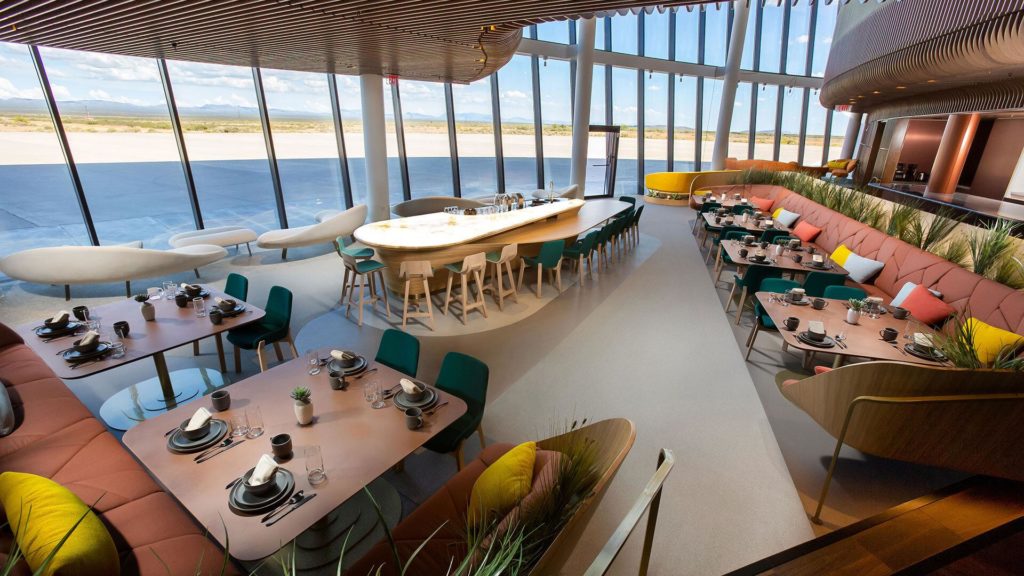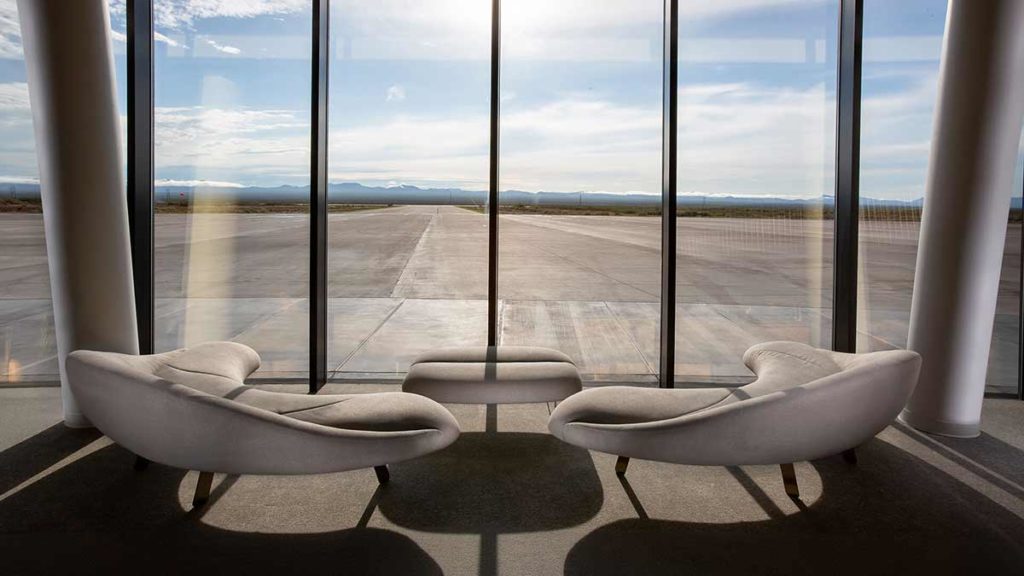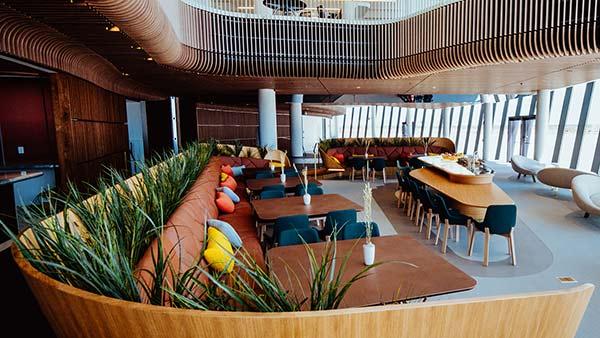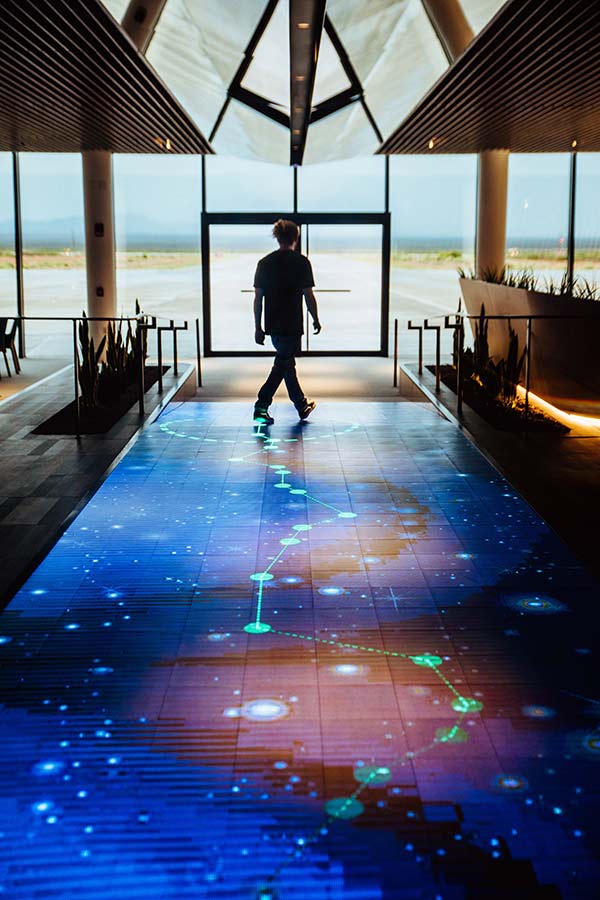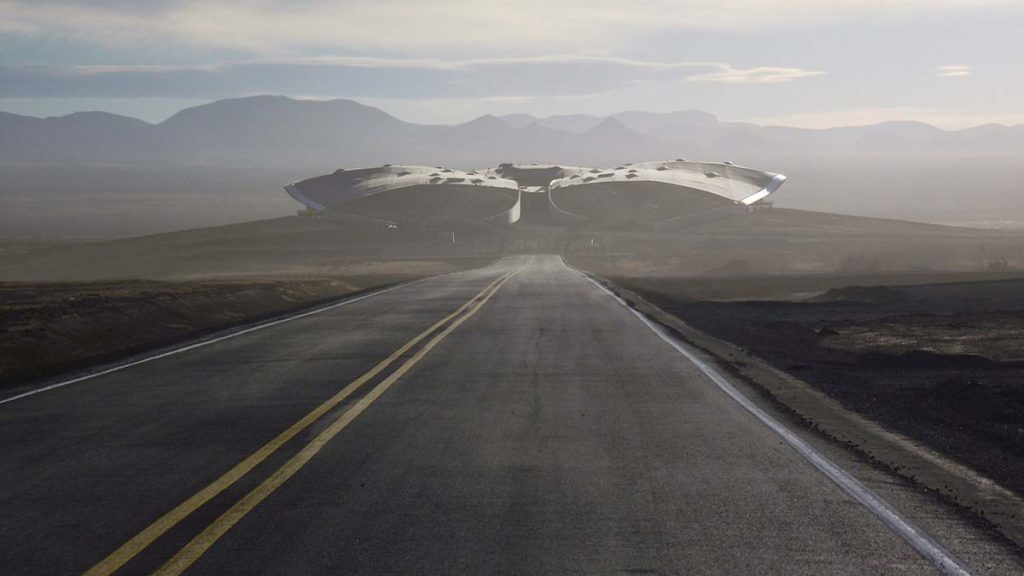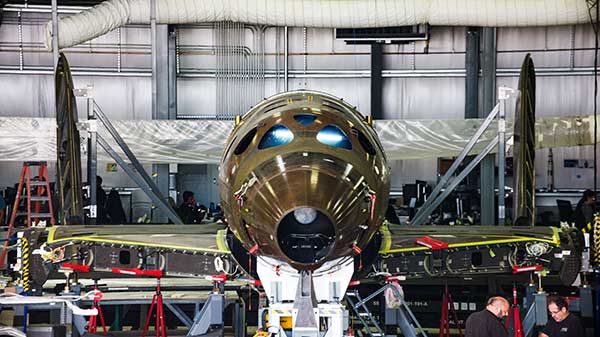Space departure lounge
Richard Branson’s private space station is ready for take-off. The interior concept for Spaceport America originates from a London design office and is almost entirely free of Star Trek vibes.
Red floor, parched scrub and craggy rock formations on the horizon. Here, at the heart of the austere desert landscape of New Mexico, is Spaceport America. It is from this space station that British billionaire Sir Richard Branson plans to take well-heeled customers into space. The interior concept – developed by Virgin Galactics chief designer Jeremy Brown in close collaboration with Viewport Studio in London – was surprisingly down-to-earth, so to speak. Hardly a hint of the Starship Enterprise or any other spaceship fantasies.
A difficult mission
“What is the starting point for something that has never been designed before?”, asked the designers at the beginning of their mission. A risky operation indeed. How do you fit out a space station without falling prey to standard space-age clichés? Which probably explains why the final interior design is geared more towards Earth than space.
The centrepiece of the new Gateway to Space is the Gaia Lounge on the lower floor. Even though the set-up could be found in any design hotel, the tables, lamps and seating areas have all been designed and built exclusively for the space station.
Our team stood on the runway and stared out to the New Mexico desert – a stark and beautiful place, rich in colour and texture. This inspiration became the main influence for the design work.
Viewport Studio
The designers found inspiration first and foremost in their new surroundings: “Our starting point was the location of the Spaceport and its surrounding landscape. Our team stood on the runway at Spaceport America and stared out to the New Mexico desert – a stark and beautiful place, rich in colour and texture. This inspiration became the main influence for the design work that followed.”
In line with the design concept, the feel-good factor took centre stage when developing the furniture. References to space travel and the surrounding desert were suitably subtle. The large, curved wooden banquettes in the dining area appear to hover above the ground. These create a certain lightness and are intended as a reference to the weightlessness of outer space. As the design concept puts it: “The barista island is the heart of the space and is designed to reflect the desert strata of the eroded sandstone monuments with a large translucent onyx top that echoes the idea of a water oasis in the desert.”
Walkway worthy of science fiction
The Gaia Lounge is not only for pilots and engineers but also for the amateur astronauts and their families and friends. The upper floor is called Cirrus – a term for clouds found at high altitudes – and stands for light, air and flight. It is the nerve centre for space travel operations and is connected to the Gaia Lounge via a gallery. Through the large glass fronts, the lounge guests can watch the astronauts stride over the central walkway, enter the spaceship and finally blast off into space.
The walkway is the only area that has an even remotely science fiction character. It consists entirely of interactive LED screens and provides suitably dramatic lighting for the boarding process. During the flight, it serves as an information screen for staff, journalists and families waiting on the ground.
Spaceport America also houses the hangar for the space shuttles and the astronaut training centre. The building was designed so that one side takes in the surrounding landscape while a cinematographic glass front looks out onto the runway. Its design comes courtesy of Norman Foster’s renowned architectural firm Foster + Partners. The British high-tech architect, who was awarded the Pritzker Architecture Prize in 1999, won the international competition in 2007.
600 space flights booked
Now that the interior has been completed, the world’s first commercial space station is ready for operation. Virgin’s space travel project suffered a severe setback in 2014 when SpaceShipTwo crashed during a test flight over the Mojave Desert. One of the pilots died while his colleague effected a miraculous escape with an emergency parachute.
This technical incident has not put off the 600 would-be space travellers that Virgin says have already booked their places. They are willing to pay around a quarter of a million US dollars for a 90-minute flight to the Earth’s outer atmosphere. Which means that the first amateur astronauts will be setting a course for zero gravity before 2020 is out.
Text: Gertraud Gerst
Translation: Rosemary Bridger-Lippe
Photos: Virgin Galactic
